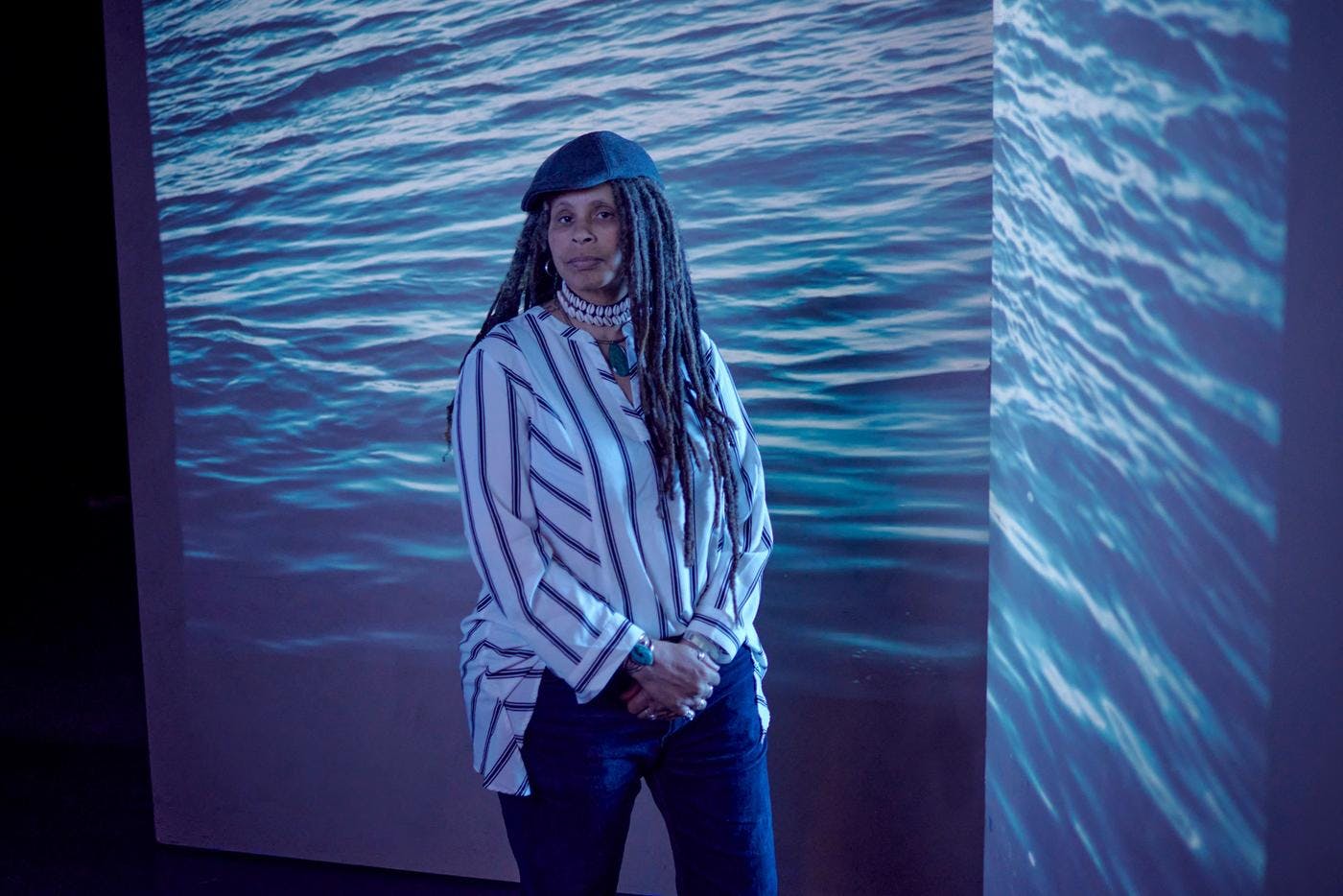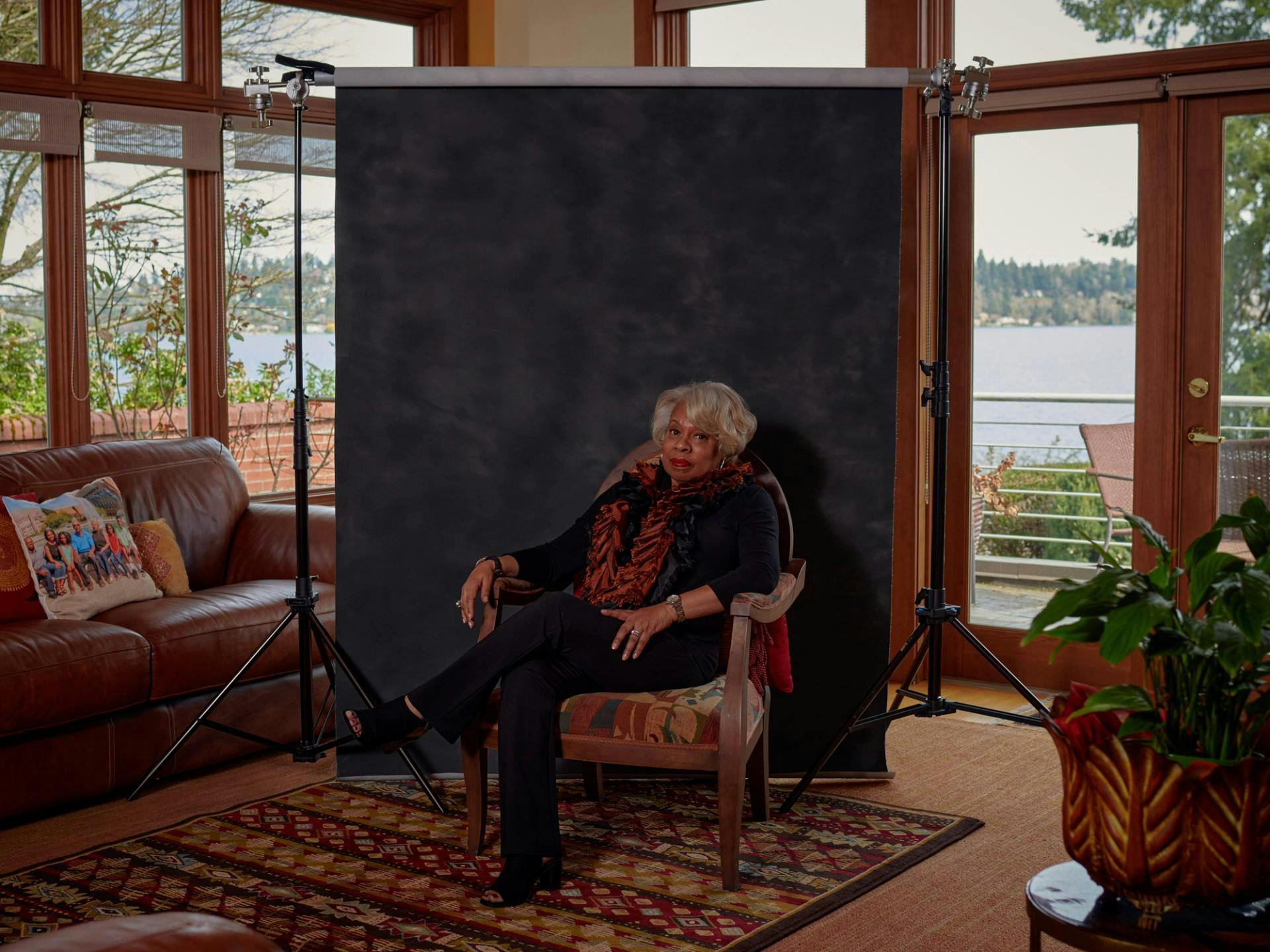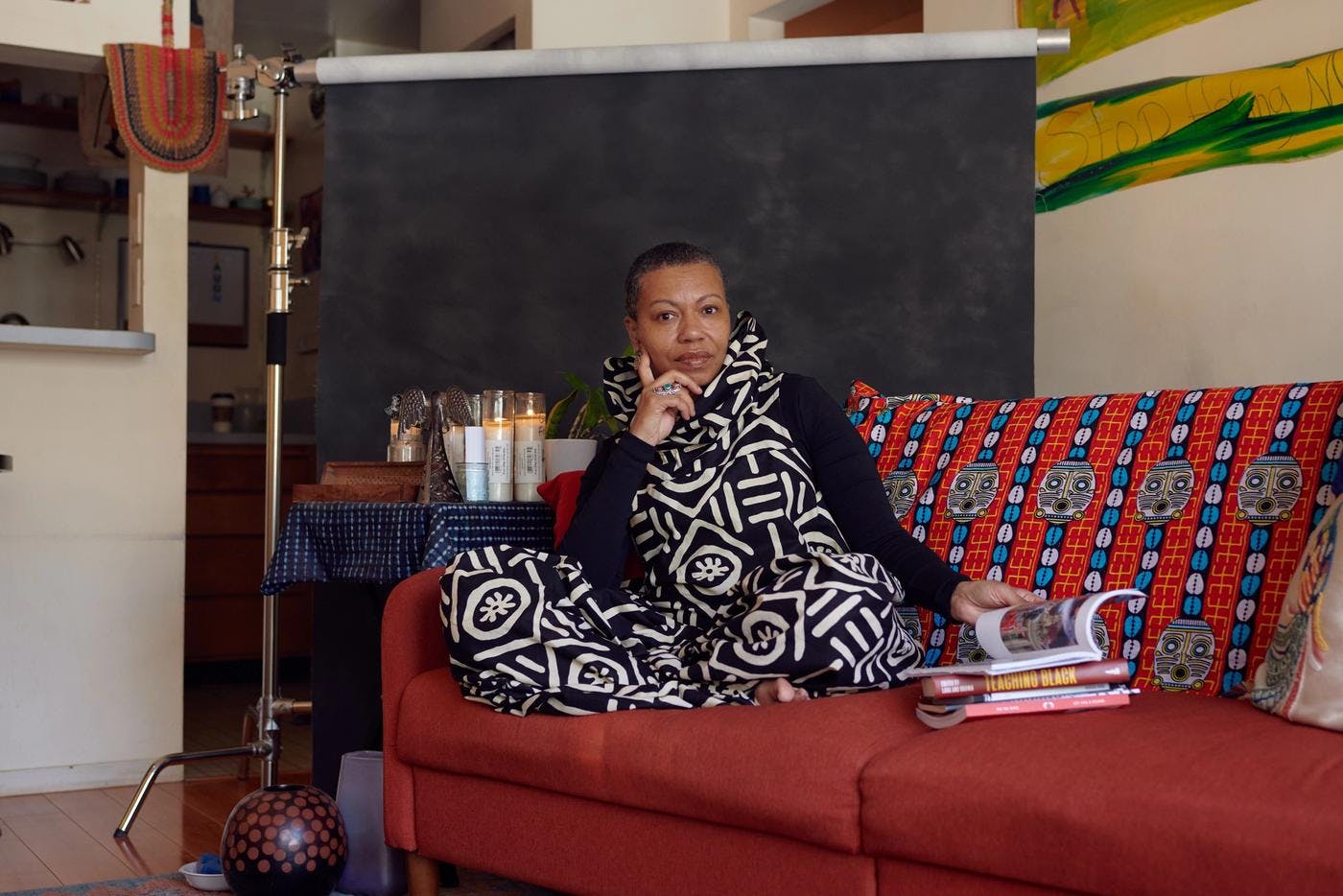
Jourdan Imani Keith
Seattle’s Civic Poet draws from nature and art to craft poems that embody the experience of living within the city’s many communities.
The former Seattle and King County poet laureate exalts the magnetic power of Black women using her verse and voice.
by Jasmine Mahmoud / June 1, 2022

When Mona Lake Jones recites poetry, she has a sweet glisten in her expressive eyes, a joyousness in her cheeks and a groundedness in her air. She can recite from memory “A Room Full of Sisters,” which she penned 30 years ago in 1992. It begins:
A room full of sisters, like jewels
in a crown: vanilla, cinnamon, and
dark chocolate brown.
Now picture yourself in the midst of
this glory,
as I describe the sisters
who are part of this story…
The poem narrates the journey of intelligent, magnetic Black women. Jones describes their beauty, externally through stylish clothes, and internally “in the values they revered.” These women “suffered from prejudices,” but nevertheless “came back stronger than ever before.” They are “The Sojourner Truths of today / still out in front, blazing the way.” Her poem is one of celebration, positivity and pride, but also about persistence, juggling many roles and resilience.
“A Room Full of Sisters” reverberates with the life of Mona Lake Jones, former Seattle poet laureate, King County poet laureate, school founder, published author, doctorate, LANGSTON board member, wife, mother, grandmother and lifelong Washingtonian who now lives in south Seattle near Lake Washington.
Born near Spokane in 1939, Jones grew up in a family of poets. “My father would write things, read poetry to me before going to bed and, for my birthday and Christmas, I would get a book of poetry,” Jones describes. Her grandmother, “the one we called Grandhoney, because she was so sweet,” she says, wasn’t formally educated but was “smart and wise,” and would write letters to Jones. “It fed from my grandmother to my father to me.”
Jones wanted to write creatively in primary school, but was rebuffed by racist school teachers who devalued her work. “Often I was the only [Black student] in the classroom and the only one in the school,” she recalls. “I was bombarded with a lot of negative messages about Blackness.”
She remembers her parents confronting her teachers, continuously affirming her and her sister’s worth. “Had [my parents] not been assertive enough to challenge systems, it would have been difficult to grow up in Spokane,” she says. “I would have really struggled with my identity and liking myself.”
The other factor that helped her feel grounded was the Black community in Spokane, including her church and the NAACP, “Small but mighty Black institutions that embraced us, and helped us know who we were,” she explains. “I got the applause from my family first, and then from my church, from my mother's Wednesday [Black Women’s] Art Club and from the Masons and all of those Black organizations.” All this support made her feel valued, even when she didn’t feel that way at school.
After graduating from Washington State University — where for a semester she says she was the “only Black woman on the entire campus” — Jones moved to Seattle in 1961. She found a thriving Black community of businesses and restaurants and nightclubs. (“[We] don't have as much now as we did then,” she notes of the gentrified city.) But she also discovered that racism made Seattle “a place of restrictive movement” for Black people. “When you thought you were going to get a job or live in a particular place,” she explains, “that redlining and ‘you can only live here’ — that was what Seattle was when I got here.”
Jones tells a story about trying to rent an apartment — with another Black friend — in early 1960s Seattle. “I thought it was going to be not any big deal. Well, come to find out, it was a big deal,” she says. “We learned quickly to stand on either side of the peephole, because if they saw us, they simply wouldn’t open the door,” Jones recalls. “We had people open the door, and suddenly, you know, ‘Oh, [the apartment] isn't available.’ ” Enduring these experiences eventually led her to testify before the Human Rights Commission in Seattle.
Around the same time, in 1961, her soon-to-be husband, Joe Jones — who played football for the University of Washington — endured similar racism while apartment hunting, and testified to the state Legislature in Olympia as part of the growing movement to end housing discrimination. Despite these testimonies, Seattle voters and officials failed to pass open housing legislation until 1968, three weeks after the assassination of Martin Luther King Jr.
In contrast, the local arts community in the 1960s to 1980s gave Jones a sense of belonging — including her experience with performance company Black Arts/West. “That was my first introduction to Black art in Seattle,” she says. “I went to all of the Black arts events and was just thrilled to see Black artists in action.”
Later she served on the board of the Langston Hughes Performing Arts Institute and became friends with visual artist James W. Washington Jr. , singer Ernestine Anderson, playwright August Wilson and musician Quincy Jones (even officiating the funeral for Quincy Jones’s late brother, Lloyd).
In 1990, an editor from Essence magazine heard Jones recite poetry, and solicited her work for publication. “That's how I started being serious,” Jones says of her writing, “because Essence gave me the opportunity to be published and people liked it.” Jones published her first book of poems, The Color of Culture, in 1993. (She followed it with The Color of Culture II in 1996 and The Color of Culture III in 2008.)
Also during the 1990s, then-Mayor Norm Rice asked Jones to be the city of Seattle’s poet laureate. She shepherded other regional poets, curated poetry at Seattle City Council meetings and greeted convention center visitors with poems about Seattle’s weather, neighborhoods, salmon, farmers market and landscape. From 2002 to 2007, Jones served a similar role as the King County poet laureate under County Executive Ron Sims.
Now an octogenarian — who walks three miles a day — Jones is stylish and magnetic. Her home is filled with art, some inspired by “A Room Full of Sisters.” She draws upon a joyful, focused energy when reciting her poetry, which emphasizes positivity and kindness. Nectar from Grandhoney (2016) includes short motivational poems about kindness and persistence. Unleashing the Power of a Sister (2008) is often quoted at motivational workshops with Black women.
Poetry as education animates Jones’s current work as national poet laureate for The Links, Incorporated (a Black women’s service organization), where, in addition to contributing ceremonial poetry, she is also launching a program to support young writers via money and mentorship. “The privilege that I feel to be before audiences and represent Blackness, I take that very seriously,” she says.
A tender memory Jones holds dear is reading to artist Jacob Lawrence a day before he passed. “When Jacob was in his very last moments of life, his wife, Gwendolyn [Knight], called and asked if I would come sit, and read to him,” she recalls. “So I went and I took Jacob's hand and said, ‘I'm going to read and you just listen, you don't have to make any kind of response.’ After a while, he would squeeze my hand.”
“‘I can see you painting this, Jacob,’ I said. ‘This is the kitchen. There was love in the kitchen. It wasn’t the greens simmering on the stove or the smell of canned strawberry jam, or the pies cooling on it. It wasn’t even the gravy being stirred to pour on the mashed potatoes. It was love that filled our kitchen. You could feel it through the hot pads when you took the cornbread from the oven. You can see it on the faces sitting around the kitchen.’ And I said, ‘I can see you painting that, Jacob.’”
Knight asked if Jones would return the following day. She agreed but wasn’t able to, as he died the next morning. “But the honor of being able to share some of my words with somebody that talented and respected in the art world, I will never, ever forget.”
Black Arts Legacies Project Editor

Seattle’s Civic Poet draws from nature and art to craft poems that embody the experience of living within the city’s many communities.

An accomplished poet expands her art practice and meets new challenges along the way.

How this Seattle artist uses poetry to illuminate the persistence of the past in the present.

Inspired by the verdant beauty of South Seattle, this poet inscribes Blackness onto the landscape.
Thanks to our Sponsors
Your support helps Crosscut create projects like Black Arts Legacies. Learn how you can help with a one-time donation or recurring membership.
Support Crosscut